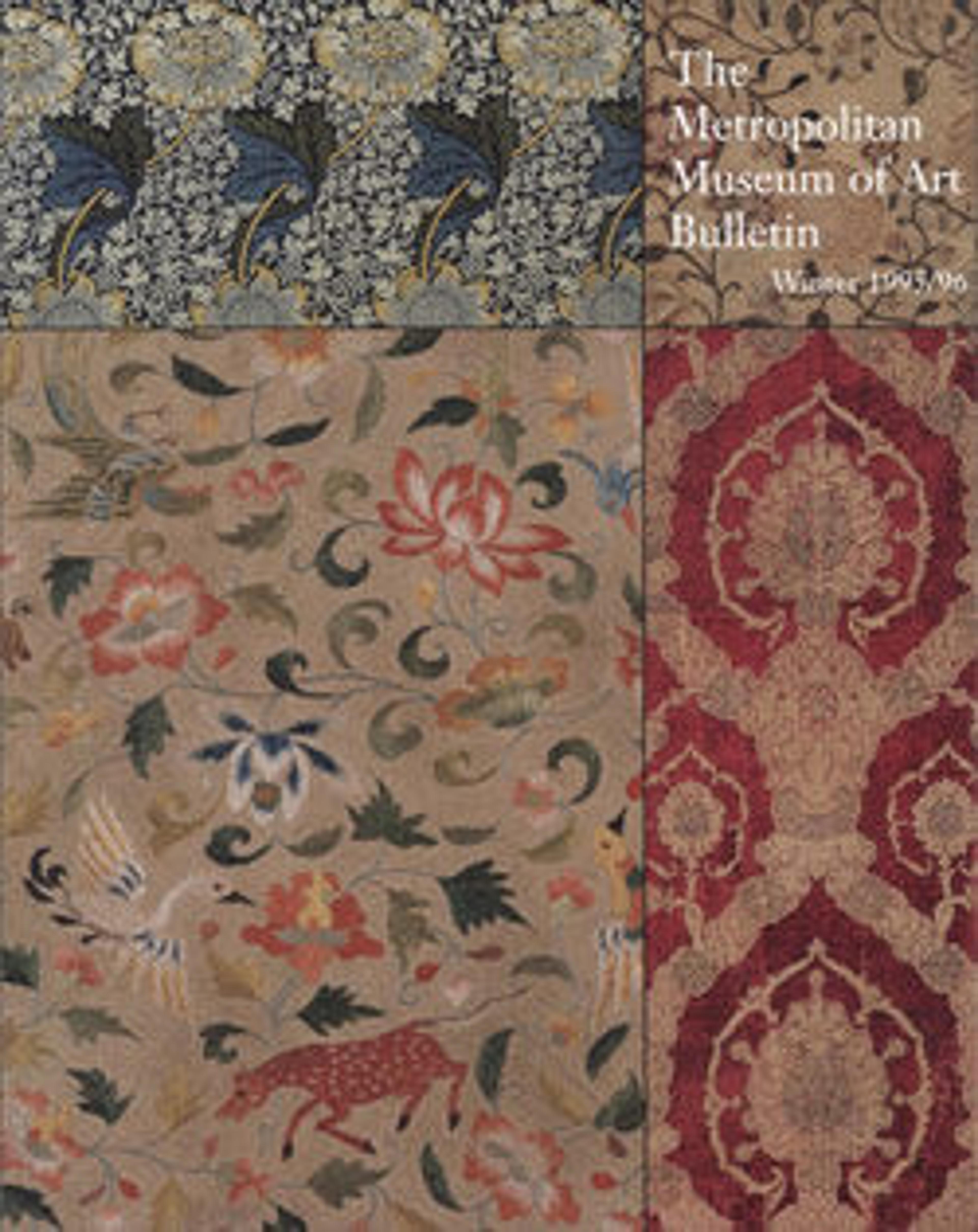Emperor’s twelve-symbol festival robe
Official costumes in imperial China were highly regulated, and the decorative motifs of court outfits were specific to rank. Among the emblems used on the emperor’s ceremonial robes were the twelve imperial symbols, as seen on this example: the sun, the moon, constellations, mountains, a pair of dragons, birds, ritual cups, water weeds, millet, fire, an ax, and the symmetrical fu symbol. These symbols, said to have been used since ancient times, represent the emperor’s righteous rule over the universe. The festival robe, also known as a dragon robe, was used for various ceremonies, such as festival banquets and military inspections.
Artwork Details
- 清乾隆 刺繡御用十二章吉服袍
- Title:Emperor’s twelve-symbol festival robe
- Period:Qing dynasty (1644–1911)), Qianlong period (1736–95)
- Culture:China
- Medium:Silk and gold and silver thread embroidery on silk twill
- Dimensions:Overall: 56 5/8 x 63 1/2 in. (143.8 x 161.3 cm)
- Classification:Costumes-Embroidered
- Credit Line:Gift of Lewis Einstein, 1954
- Object Number:54.14.2
- Curatorial Department: Asian Art
More Artwork
Research Resources
The Met provides unparalleled resources for research and welcomes an international community of students and scholars. The Met's Open Access API is where creators and researchers can connect to the The Met collection. Open Access data and public domain images are available for unrestricted commercial and noncommercial use without permission or fee.
To request images under copyright and other restrictions, please use this Image Request form.
Feedback
We continue to research and examine historical and cultural context for objects in The Met collection. If you have comments or questions about this object record, please contact us using the form below. The Museum looks forward to receiving your comments.
